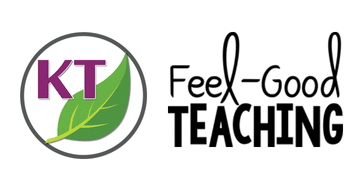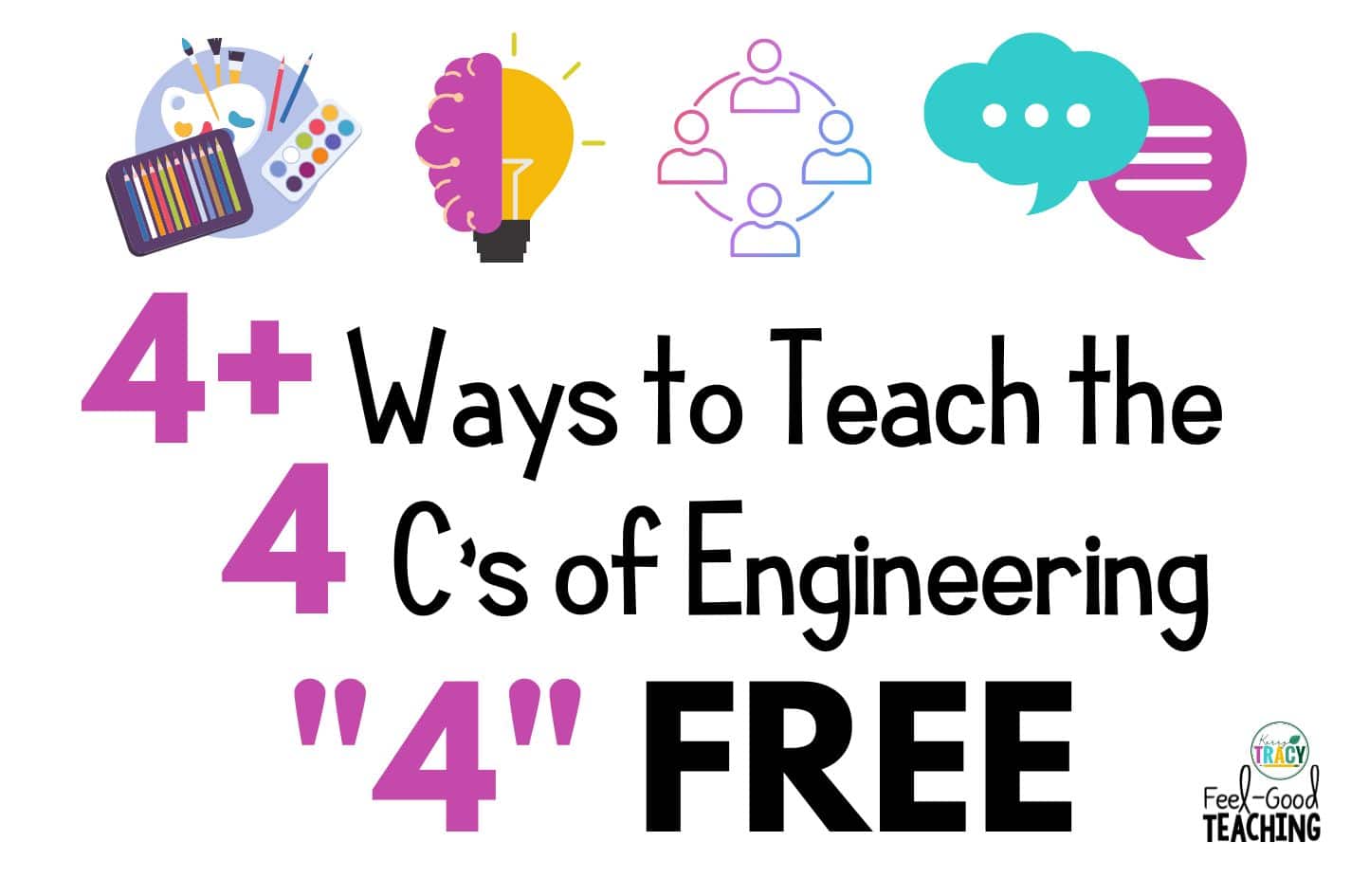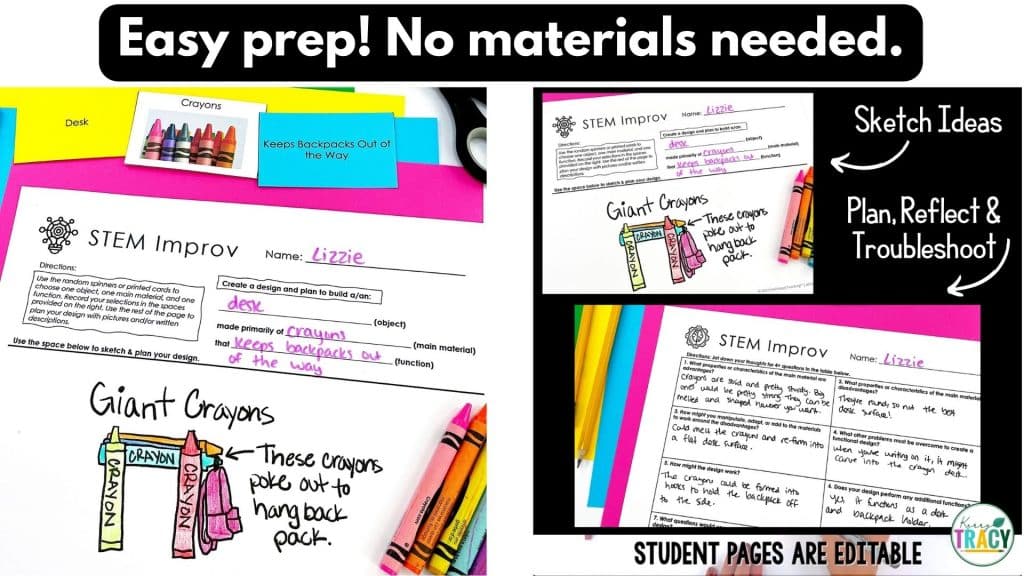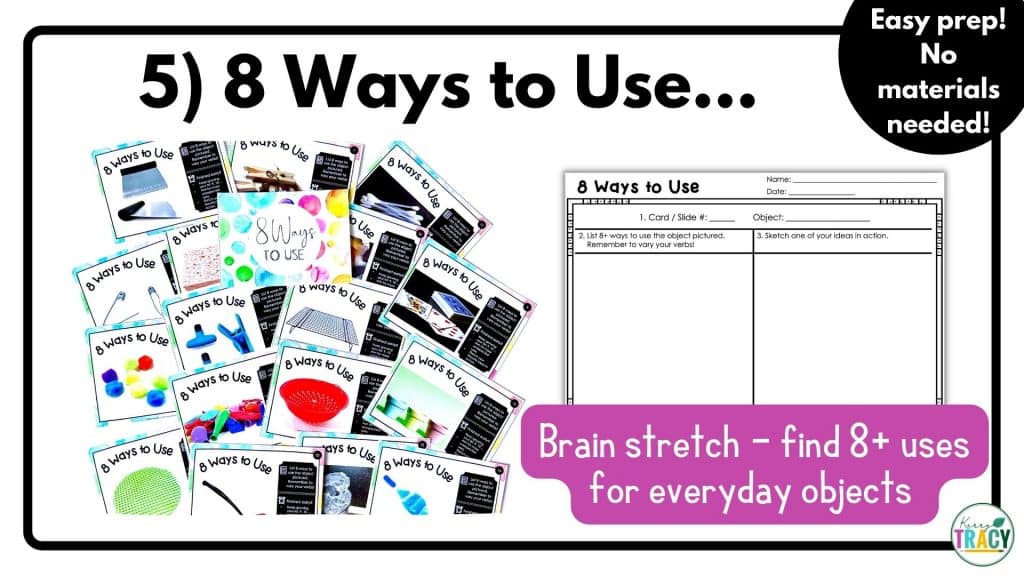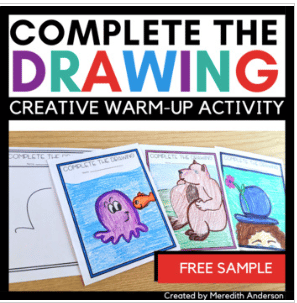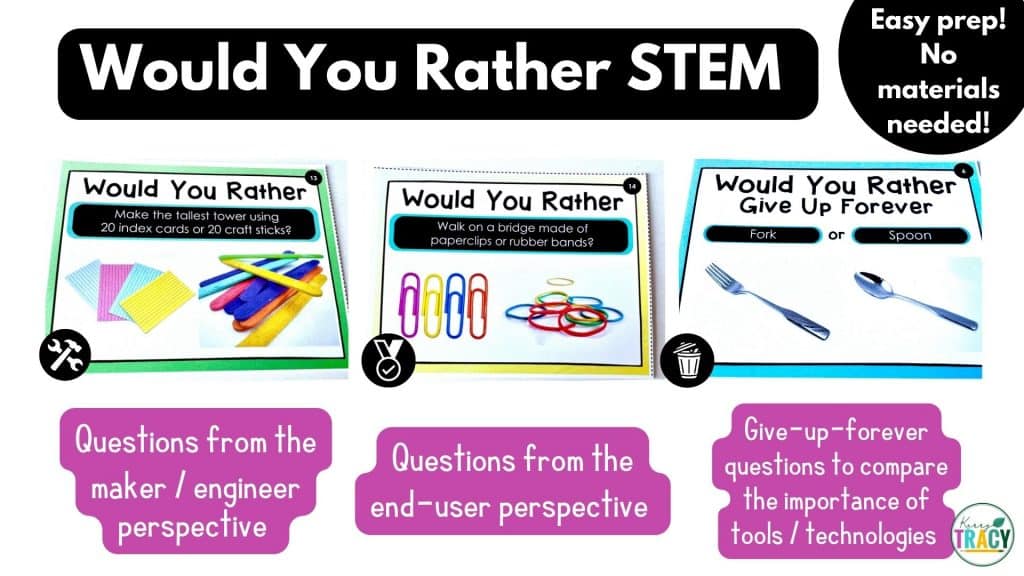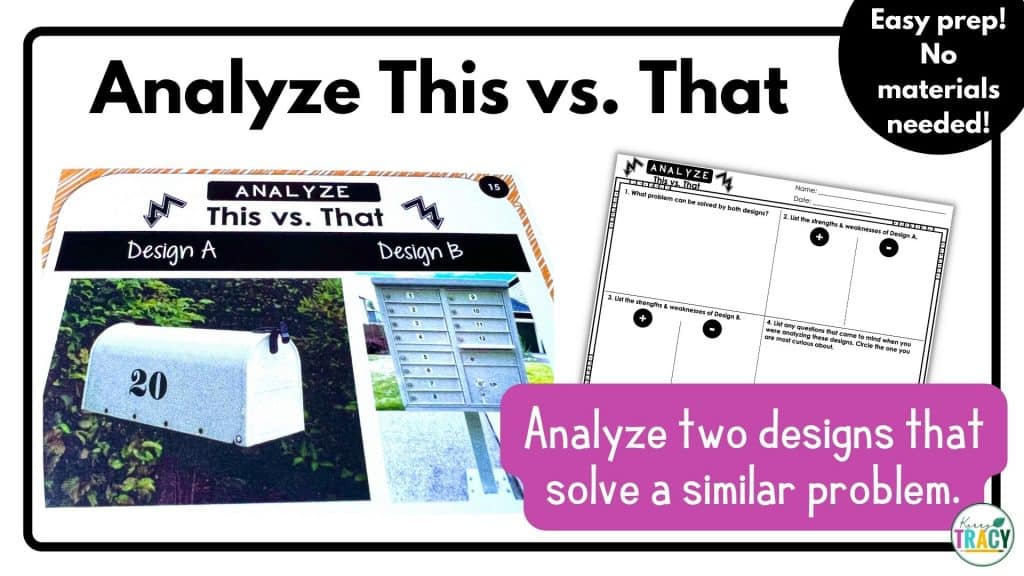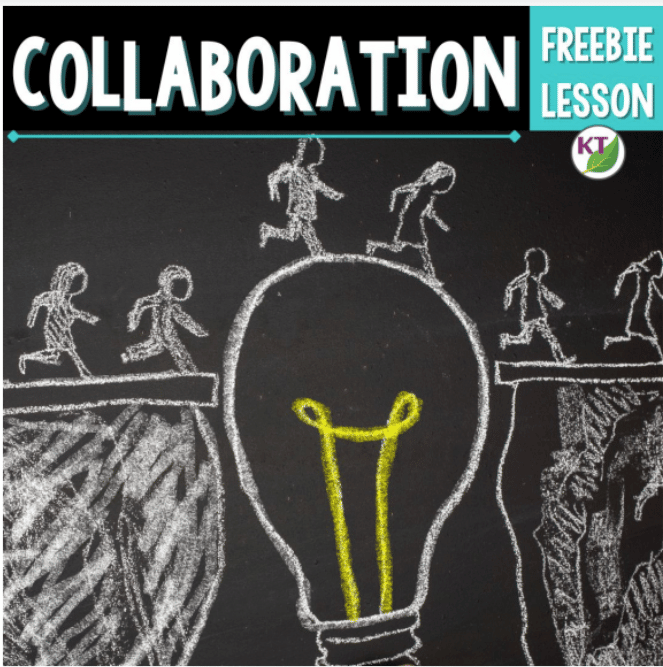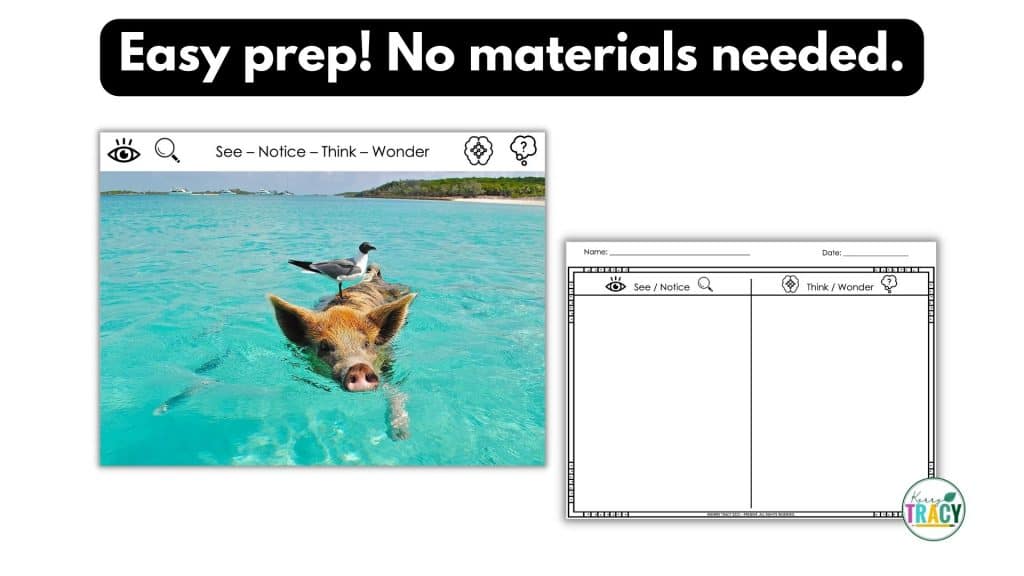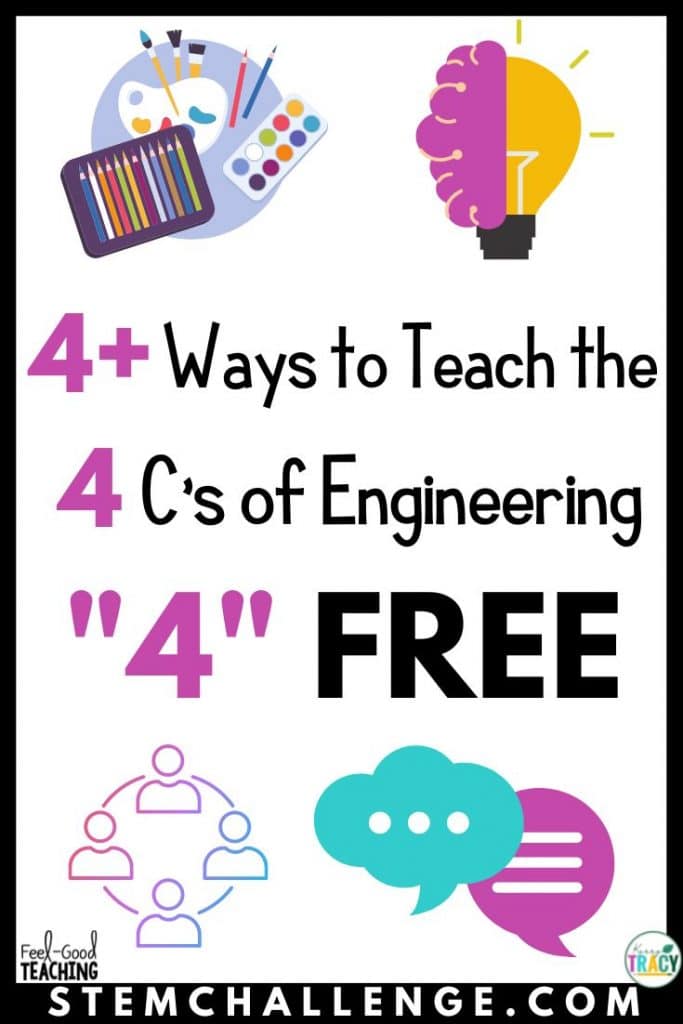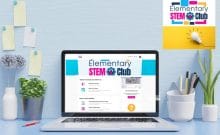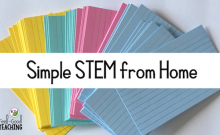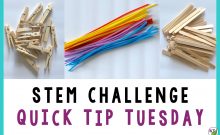You know the 4 C’s of engineering are creativity, critical thinking, collaboration, and communication. Your students know it too. But getting students to identify the 4 C’s and getting them to demonstrate the 4 C’s are two very, VERY different things! A vast chasm sometimes exists between the two.
I know you know the pain I’m talking about. 😂
So how to we build students a bridge to walk from knowing the 4 C’s of engineering and embodying the 4 C’s of engineering?
Real-Talk News — We have to teach what these skills look and sound like and we have to practice them often.
Better News — I have LOTS of ways to teach creativity, critical thinking, collaboration, and communication for you today!
Best News – Everything is very low prep / no prep, fast & free & many ideas can be repeated quite a lot!
Bonus News — I’m throwing in a 5th C — Curiosity!
I go over everything in the video below, or you can read on if you prefer. What’s the difference? The main ideas are the same in both. However, the post is more of a condensed outline. In the video, I give more tips, show more examples, talk about troubleshooting, answer questions, etc. 😊
Get Access to the 4 C’s of Engineering Freebie Resource Folder Below
How to Teach Creativity
First off, we need to create an environment that encourages creativity. This means we need to clear a little bit of time to let the brain breathe a bit. I like to play focus music, usually classical or other instrumental music while students work on some of these activities.
Creativity Free Idea #1 – STEM Improv
In STEM Improv, students choose at random a material, object and function. The materials are unconventional (any Project Runway fans in the house?🙌). When combined with the random objects and functions, students stretch their minds and imaginations to plan a design. Because they aren’t actually building the designs, the possibilities are endless. You can do this in just 5 minutes, or you can include the reflection questions and stretch it to 10-15. There are extension ideas too if you want to keep going.
Creativity Free Idea #2 – 8 Ways to Use …
Grab any everyday object and ask students to come up with 8 ways to use it. You can do this with physical objects or photographs. I’ve included some examples in the 2 weeks of bellringers in your freebie folder. I also shared some ideas in the video. One key to this — encourage students to vary the verb they use to stretch their minds!
Creativity Free Idea #3 – Partial Drawings
Grab this freebie from Momgineer! Such a simple and easy thing to do. In addition to pre-made partial drawings like these, you can also make your own. Just go into PowerPoint or Google Slides and make a page full of circles, triangles, squares, etc. and have students turn those shapes into various objects. For example, someone might turn a circle into a basketball, a soccer ball, a Petri dish, etc. Fast, fun & easy — my favorite!
Creativity Quick Tip
Use a 4 Cs Rubric to review creativity expectations before every STEM Challenge. There’s one in your freebie folder! ❤️
How to Teach Critical Thinking
OK, this is the big one, right? How to we help students to think critically? What do we even mean by that? For me, I’m looking for students to be engaged with the content, to make connections, ask questions, discuss, debate, be skeptical, analyze, compare & contrast, use logic & reason … basically, all the things!
Sounds pretty, but again, there’s a chasm between knowing and doing & we need to bridge the gap!
Critical Thinking Free Idea #1 – Would You Rather STEM Scenarios
This is the easiest place to start. It’s a great bell-ringer. I’ve set my Would You Rather questions into three categories for the first set. (I may add other categories in the future). The three question types ask students to think of themselves as the maker in the scenario, the end-user, or to consider the importance of various objects and technologies and decide which one to give up forever. You’ll find some examples in the freebie folder, and I pictured some below too.
Critical Thinking Free Idea #2 – Analyze This vs. That
Take two everyday objects or photos of two designs that solve roughly the same problem. Have students identify the problem being solved, the strengths & weaknesses of the designs, and any questions they have. I’ve set up these simple cards to complete the activity as a bell ringer. If you want more in-depth questions or options to compare/contrast three or four designs or go deeper on analyzing one or two designs, there are two options.
Check out Real-World Design Analysis for handout templates and/or wait a smidge for the 3-4 set of Analyze This vs. That to come out. It’s coming soon!
Critical Thinking Free Idea #3 – STEM Improv (again)
The second student page guides students through a series of questions to consider potential problems in the materials & design, ideal customers, questions they need answered, etc.
Critical Thinking Quick Tip
Use a 4 Cs Rubric to review critical thinking expectations before every STEM Challenge. There’s one in the freebie folder. 💜
Did you grab those 4 C’s of Engineering Freebies yet?
How to Teach Collaboration
Admission — I used to tell students they needed to collaborate without really defining it and then get frustrated when they didn’t meet my expectations: a classic tell vs. teach moment! 😂
So first, let’s make sure everyone is on the same page.
Collaboration Free Idea #1 – Mini Lesson
In this activity, students define what collaboration is, what it looks like, what it sounds like, and how to troubleshoot when collaborations don’t go according to plan.
Collaboration Free Idea #2 – Build Challenge
Choose a simple build challenge, like a card tower. Before doing the challenge, give students the 4 C’s of Engineering rubric (there’s one in the folder). Tell them their main focus will be on collaboration. That means, when they finish the activity, you’ll all look at the towers, but the focus of your discussion will be on examples of collaboration — good, bad & ugly.
Have them rate themselves on the rubric. Ask for specific examples where they incorporated and considered each other’s ideas, where they felt heard & where they didn’t (try to get students to tell what behaviors and words felt affirming or dismissive).
Try not to get annoyed when they don’t collaborate well. Just give them the time to analyze & discuss and think about ways to do it better next time. Knowing how to collaborate can all go up in the air when faced with a team challenge, the stress of time limits, personality conflicts, etc. Taking the time to reflect on the 4 C’s of engineering after using them in context is so helpful!
Collaboration Quick Tip:
During STEM Challenge activities, if students are having trouble collaborating, refer back to the rubric & mini lesson, of course. In addition, it’s helpful to sometimes have students each create a plan/design on their own. Then group them up and require at least one idea from each team member is included in a new group design.
How to Teach Communication
Communication Free Idea #1 – Speak, Listen, Draw
Love this one – partner students up. Student 1 has a card with a drawing and gives directions to Student 2 to draw the picture. There are sample cards in the folder, and you can even have students create their own. I usually do this as an oral activity, but it’s also a great writing activity. Have students plan & write out their directions one day. Maybe challenge them to create the “perfect” directions in the fewest amount of words or sentences and then try it out on a subsequent day.
Communication Free Idea #2 – STEM Activity Exchange Program
I got this idea from a fabulous teacher in a training I did in Auburn, WA. I wish I had written down her name, so I could credit her properly.
When doing any STEM Challenge, every few minutes, select one student from each group to shift to another group. Their new group must get them up to speed on their designs and incorporate them into their team. This can also help with collaboration issues. Take that dominant child out of their team and shift them to a new team. It’s pretty tough to walk into a new team with an idea in progress and convince them to chuck it all to go with your ideas!
Communication Free Idea #3 – STEM Activity in Silence
I’m pretty sure this was the same teacher’s idea too — have students do a simple challenge, like the card tower, in complete silence. They must communicate with gestures and writing only.
Communication Quick Tip
Use that 4 Cs Rubric to review communication expectations before every STEM Challenge.
How to Teach Curiosity
Curiosity, like creativity, requires time, space & quiet for the brain to breathe.
Curiosity Free Idea #1 – See, Notice, Think, Wonder
Bonus – this STEM activity is actually critical thinking too. In See-Notice-Think-Wonder, either bring in an object or photograph for students to examine and let their minds wander. It’s great if this object is something unusual or interesting to begin with, but over time, you can challenge students with things that are more ordinary.
Have students fold their papers in half. I prefer to have the paper in landscape, but you do you! On one side students list all the things they see or notice about the image. This is the “light-lifting” side. They’re making observations, noticing patterns, etc. On the think/wonder side, students engage their brains more. They make connections to things they already know and draw conclusions and list as many questions as they can. (More details are available in the video at the top of the post.)
I’ve included examples of See, Notice, Think, Wonder in your folder in both weeks of the STEM Bell Ringers.
Curiosity Free Idea #2 – Question Competitions
Put students in groups and task them with coming up with as many questions as possible in a set amount of time. You’ll notice as you go through many of the freebies, getting students to generate questions is included quite a lot. It turns on a different part of the brain when we’re asked to generate questions!
Curiosity Tip
Follow-through — you don’t have to follow-up on every single question students come up with. It’s ok to practice generating questions for its own sake. However, it’s far more powerful to give students time to follow up with research on their curiosities.
For example, if you try those two weeks of STEM Bell Ringers in your folder, several days each week asks them to generate questions and circle the ones they’re most interested in answering. Once every week or so, give them time to research one or more of their circled questions. You’ll notice this is an option on the choice board included.
When Teaching the 4 C’s of Engineering – Patience, Environment & Culture are Key!
Remember to be patient as our students build these skills. Many of them don’t have strong 4 Cs muscles — and that’s probably why you’re here reading this!
Just like a sedentary person can’t lift 200 lb. weights over their head in their first visits back to the gym, we needn’t be discouraged with a slow start from students as we begin these exercises. Some kids will shine and others will struggle, but keep at it.
Finally, make time for students to share their questions, ideas and designs from all of these activities. They’ll learn from each other and the opportunity to impress and entertain each other encourages engagement and buy-in.
Related Blog Posts
Related Resources
- Character Education in STEM Classes – STEM Ideals Bundle
- 20 Weeks of STEM Bell Ringers – 20 Days of STEM Sub Plans / Centers
- Real-World Design Analysis
- Analyze This vs. That
- 8 Ways to Use Creativity Activities
- Would You Rather STEM Edition
- One Week of STEM Bell Ringers (Free)
PIN ME
